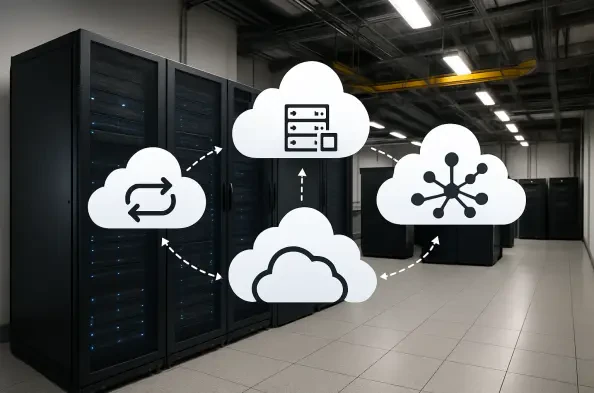Setting the Stage for Multicloud Security Challenges
In an era where digital transformation dictates business success, a staggering 78% to 86% of organizations operate within multicloud or hybrid environments, leveraging multiple cloud providers or blending on-premises systems with cloud solutions to achieve their goals. This widespread adoption, while fueling agility and resilience, has opened a Pandora’s box of cybersecurity vulnerabilities, with threat actors exploiting compromised credentials and policy gaps to wreak havoc across interconnected systems. This market analysis delves into the intricate landscape of multicloud security, exploring current trends, dissecting data-driven insights, and forecasting future directions. The purpose is to equip stakeholders with a comprehensive understanding of the risks and strategies shaping this critical domain, ensuring businesses can safeguard their digital assets amidst an ever-evolving threat landscape.
Deep Dive into Multicloud Security Market Trends and Projections
Adoption Surge and Escalating Risks in Multicloud Environments
The multicloud model has solidified its position as a cornerstone of enterprise IT, driven by the need for operational flexibility, specialized services, and redundancy. Industry surveys indicate that a significant majority of companies have embraced this approach, with adoption rates continuing to climb as businesses seek to mitigate vendor lock-in and optimize costs. However, this expansion comes with heightened risks, as over half of these organizations expose critical assets to potential attack paths due to lax security measures. The market reflects a pressing demand for robust solutions to counter these vulnerabilities, with cybersecurity spending in this sector projected to grow substantially over the next few years as companies scramble to fortify their defenses.
Identity Management as a Critical Market Focus
A dominant concern within the multicloud security market revolves around identity and access management (IAM), identified as a primary vulnerability exploited by attackers. Sophisticated threat groups leverage weak or overprivileged credentials to navigate laterally across cloud and on-premises setups, often remaining undetected for extended periods. This has spurred significant investment in IAM solutions, with vendors offering federated identity standards and unified control mechanisms to address these gaps. Market data suggests that IAM tools are among the fastest-growing segments in cloud security, as businesses recognize that securing access is the first line of defense against breaches that can cost millions in damages and reputational loss.
Fragmented Policies and Tool Overload Driving Market Shifts
Another pivotal trend shaping the market is the challenge of maintaining consistent security policies across disparate cloud platforms, compounded by the proliferation of standalone security tools. Inconsistent access controls create exploitable pathways, while the use of multiple tools results in alert overload and fragmented visibility for under-resourced security teams. This has led to a noticeable shift toward integrated security platforms, with market analysts predicting a move away from siloed solutions toward consolidated systems that streamline threat detection and response. Vendors offering unified dashboards and automated workflows are gaining traction, reflecting a market preference for efficiency over complexity.
Visibility Struggles and the Push for Comprehensive Monitoring
Achieving comprehensive visibility into security events across multiple clouds remains a persistent hurdle, influencing market dynamics significantly. The dilemma of logging too much data, which obscures critical insights, or too little, which misses key threats, has been evident in high-profile breaches affecting major databases and containerized environments. As a result, demand for advanced monitoring and logging solutions is on the rise, with market projections indicating strong growth in cloud-native security tools that prioritize actionable insights. Additionally, regional regulatory differences are pushing vendors to develop customizable solutions that cater to diverse compliance needs, further diversifying the market landscape.
Human and Cultural Factors Impacting Market Solutions
Beyond technology, the human element plays a substantial role in shaping the multicloud security market, as cultural and skill disparities among global teams impact defense capabilities. Security is increasingly viewed as a people-centric issue, with a growing emphasis on fostering a risk-aware culture within organizations. Training programs and managed security services are seeing increased adoption, as businesses seek to bridge skill gaps and align IT practices with broader business objectives. Market trends indicate that solution providers incorporating human-centric design—such as intuitive interfaces and tailored training modules—are likely to capture a larger share of this evolving sector.
AI Integration and Future Market Innovations
Looking ahead, the integration of Artificial Intelligence (AI) into multicloud security frameworks stands out as a transformative trend with significant market potential. AI-driven tools capable of correlating vast amounts of telemetry and identifying attack patterns are poised to redefine threat prioritization and response mechanisms. While widespread adoption remains in early stages due to cost and implementation challenges, market forecasts suggest that within the next few years, adaptive AI solutions could become a standard offering. Economic pressures and tightening regulations, especially in data-sensitive regions, are also expected to accelerate the consolidation of security platforms, shaping a future market that prioritizes intelligence and adaptability over fragmented approaches.
Reflecting on Multicloud Security Insights and Strategic Pathways
This analysis of the multicloud security market underscores the rapid adoption of multicloud environments as a business imperative, alongside the escalating risks of credential misuse, policy inconsistencies, and visibility gaps that accompany this shift. The examination reveals a market in transition, with strong growth in IAM solutions, integrated platforms, and AI-driven innovations signaling a move toward more cohesive and intelligent defenses. It also highlights the indispensable role of human factors, as cultural alignment and skill development prove just as critical as technological advancements in combating threats. Moving forward, businesses are encouraged to prioritize unified IAM controls, consolidate security tools to reduce operational noise, and invest in training to empower teams against sophisticated attacks. Additionally, keeping an eye on emerging AI capabilities offers a strategic edge, positioning organizations to adapt to future threats with agility. These steps, grounded in the insights gained, pave the way for a resilient approach to securing the complex multicloud landscape that defines modern enterprise IT.






